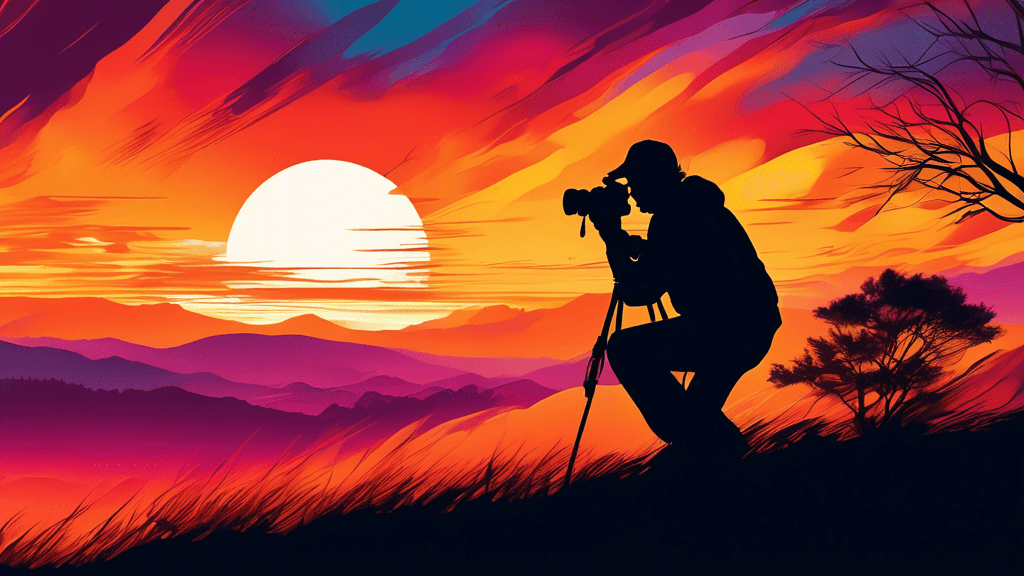
Capturing Motion: Dynamic Landscapes Through a Photographer's Eye
Share
The Art of Capturing Motion in Dynamic Landscapes
Photography is not just about capturing stillness; it's about capturing life. Nowhere is this more evident than in the genre of dynamic landscape photography, where the majesty of natural environments is expressed not only in their tranquil moments but also in their movement and chaos. But how does one freeze a moment that's intrinsically defined by its motion, and why is this important, especially today as we face environmental shifts?
Understanding Motion in Landscape Photography
Before delving into techniques, it's crucial to understand what constitutes motion in landscape photography. Typically, motion can be observed in natural elements like water, clouds, or foliage swayed by the wind. These movements imbue a static image with life, offering a glimpse into the dynamics of nature's processes.
Technical Mastery: Shutter Speed and Beyond
Capturing motion effectively requires technical expertise, particularly in understanding and manipulating shutter speed. Shutter speed determines how movement is captured, whether as a crisp freeze-frame that isolates a split second of action, or as a smooth blur that conveys fluid motion.
- Fast Shutter Speed: This freezes motion, perfect for capturing the dramatic splash of a wave against rocks or a bird in mid-flight.
- Slow Shutter Speed: This allows for motion blur, ideal for creating a silky effect in moving water or clouds streaking across the sky.
Apart from shutter speed, other considerations include ISO settings, aperture, and the use of neutral density filters to manage light and depth of field. Each setting contributes to how motion is portrayed, adding layers of depth to what might initially appear as a simple landscape shot.
The Role of Composition in Capturing Motion
Composition plays a pivotal role in how movement within the frame is perceived. Leading lines, for example, can direct the viewer’s eye towards moving elements, while framing can isolate moving subjects to emphasize their motion against a static background.
Renowned nature photographer Ansel Adams once said, You don’t take a photograph, you make it. This is particularly true in dynamic landscape photography. The composition isn't just about balance and aesthetics; it's about storytelling. Where you place a moving element within the frame can change the narrative of the image.
Challenges and Rewards of Capturing Motion
Mastering the capture of motion in landscapes presents its own set of challenges. Timing is everything. The unpredictability of natural elements means that countless hours might be spent waiting for that perfect moment. Additionally, battling the elements themselves—such as harsh lighting or inclement weather—adds another layer of complexity.
However, the rewards are immense. Capturing motion can convey emotions and dynamics that are otherwise lost in static landscapes. It provides a new perspective on familiar scenes, and can elevate a simple landscape into an emotive narrative about the environment's inherent movements.
The Importance of Dynamic Landscapes in Today's Environmental Context
In today's rapidly changing environmental landscape, capturing the movement of nature through photography is more than just an artistic endeavor—it is a form of advocacy. Dynamic landscapes remind viewers of the beauty and fragility of our natural world and highlight the urgent need for conservation. They serve as a powerful tool to spark interest and drive action towards environmental preservation.
By documenting how landscapes change—not just over years, but in fleeting moments—photographers can make a compelling case for why these environments are worth saving. This is particularly impactful when considering the effects of climate change, where visual evidence of environmental transformation can be more persuasive than statistical data alone.
Conclusion: A Call to Photographers
Dynamic landscape photography is not only about showcasing the beauty and power of the earth; it's also about responsibility. As photographers, we have the tools to bring attention to the constant changes happening around us, whether they're slow and almost imperceptible or swift and devastating.
The challenge, therefore, is to not only capture these movements but to do so in ways that inspire and inform. Whether you're a seasoned professional or an amateur with a keen eye, consider how your photographs of moving landscapes can contribute to a greater awareness and appreciation of our world. Will your next shutter click be one that captures not just an image, but also a message?
Now, go out, explore with your camera, and let the earth’s moving stories inspire your next great photograph.





